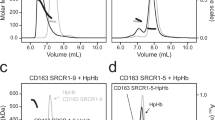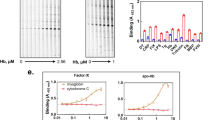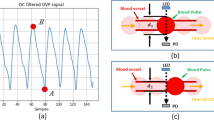Abstract
THE influence of various electrolytes on the position (haemoglobin–oxygen affinity) and on the slope (haem–haem interaction) of the oxygen dissociation curve (ODC) of pure haemoglobin solutions has been known for several years1–3. Recent investigations4–6 have revealed the unique role of organic phosphates, such as 2,3-di-phosphoglycerate (2,3-DPG), as determinants of the haemoglobin–oxygen affinity. Thus, with pure haemoglobin solutions, an increase in the concentration of 2,3-DPG in the medium decreases the affinity by competitive reaction with oxygen6, while a decreased concentration of 2,3-DPG is associated with an increased affinity for oxygen. The concentrations of 2,3-DPG used in these experiments are in the range which occurs in normal or abnormal physiological conditions in the intact erythrocyte. Because variations in concentrations of 2,3-DPG do not appear to influence the sigmoid shape of the ODC but only its position, these compounds presumably do not affect the haem–haem interaction6.
This is a preview of subscription content, access via your institution
Access options
Subscribe to this journal
Receive 51 print issues and online access
$199.00 per year
only $3.90 per issue
Buy this article
- Purchase on SpringerLink
- Instant access to full article PDF
Prices may be subject to local taxes which are calculated during checkout
Similar content being viewed by others
References
Barcroft, T., and Camis, M., J. Physiol., 39, 118 (1909).
Rossi-Fanelli, A., Antonini, E., and Capute, A., J. Biol. Chem., 236, 397 (1961).
Enoki, Y., and Tyuma, I., Jap. J. Physiol., 14, 280 (1964).
Benesch, R., and Benesch, R. E., Biochem. Biophys. Res. Commun., 26, 162 (1967).
Chanutin, A., and Curnish, R. R., Arch. Biochem. Biophys., 121, 96 (1967).
Benesch, R., and Benesch, R. E., Proc. US Nat. Acad. Sci., 59, 526 (1968).
Bartlett, G. R., and Marlow, A. A., J. Lab. Clin. Med., 42, 188 (1953).
Rapoport, S., and Nieradt, C., Biochem. Z., 326, 231 (1955).
Joyce, B. K., and Grisolia, S., J. Biol. Chem., 233, 350 (1958).
Siggaard-Andersen, O., Jørgensen, K., and Naeraa, N., Scand. J. Clin. Lab. Invest., 14, 298 (1962).
Towne, J. C., Rodwell, V. W., and Grisolia, S., J. Biol. Chem., 226, 777 (1966).
Astrup, P., Engel, K., Severinghaus, J. W., and Munson, E., Scand. J. Clin. Lab. Invest., 17, 515 (1965).
Naeraa, N., Scand. J. Clin. Lab. Invest., 16, 630 (1964).
Zipursky, A., LaRue, T., and Israels, L. G., Canad. J. Biochem. Physiol., 38, 727 (1960).
Schröter, W., and Heyden, H. V., Biochem. Z., 341, 387 (1965).
Charache, S., Fiedler, A. J., Grisolia, S., and Hellegers, A. E., Clin. Res., 16, 301 (1968).
Author information
Authors and Affiliations
Rights and permissions
About this article
Cite this article
ENGEL, K., DUC, G. Effect of Iodoacetate and Fluoride on the Position of the Haemoglobin Oxygen Dissociation Curve of Human Whole Blood. Nature 219, 936–938 (1968). https://doi.org/10.1038/219936a0
Received:
Revised:
Issue date:
DOI: https://doi.org/10.1038/219936a0



